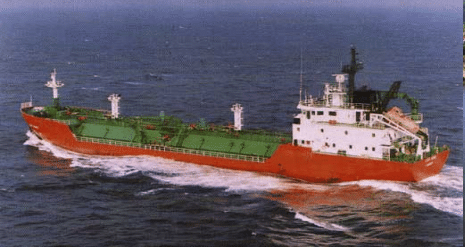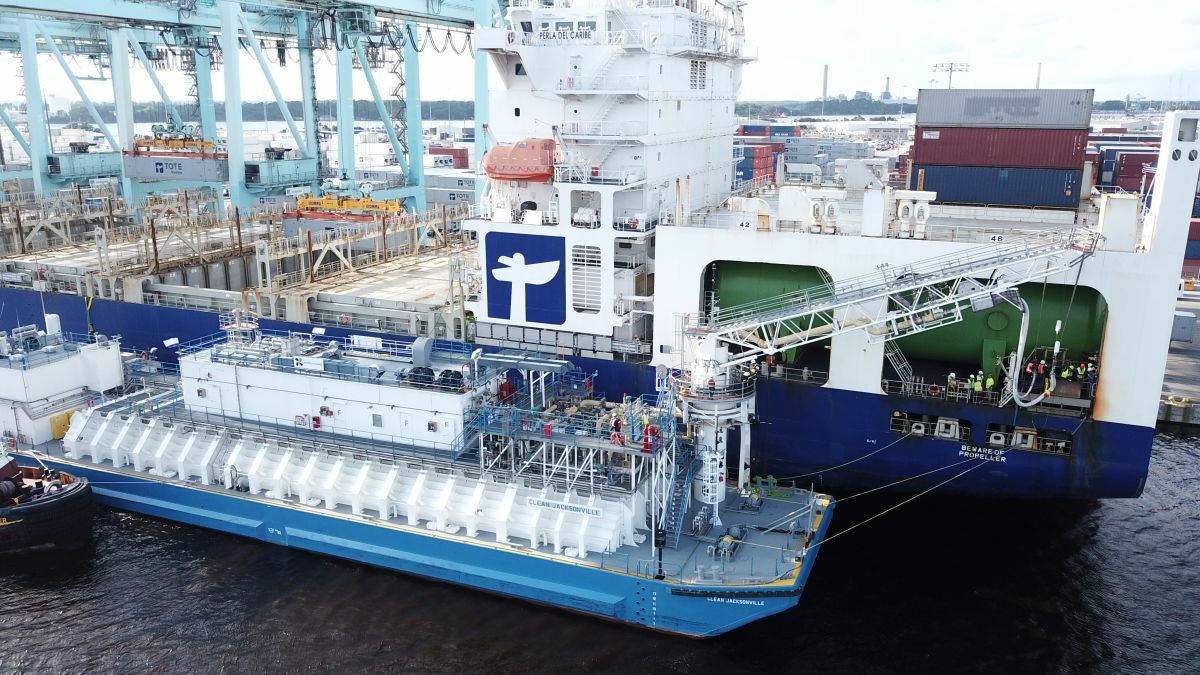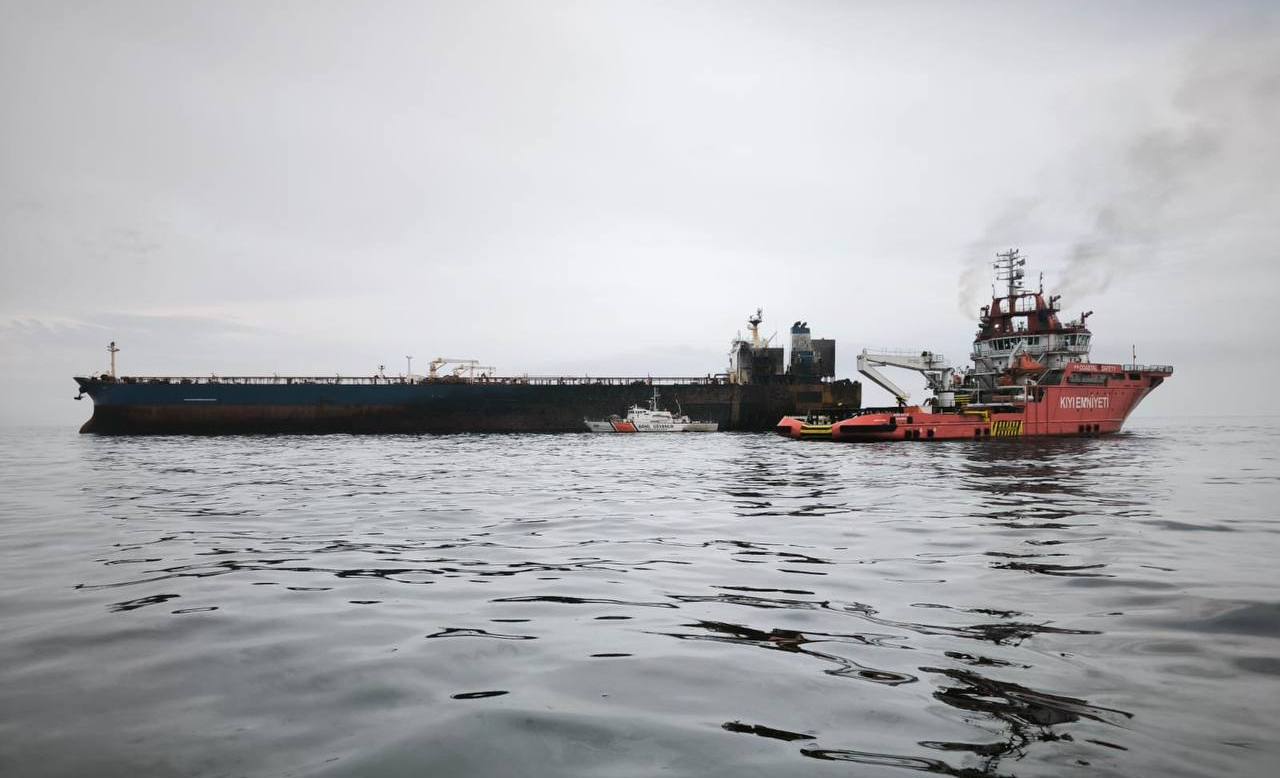Stealth Ice LPG carrier, image: StealthGas
(Bloomberg) — Record U.S. exports of liquefied petroleum gas are spurring StealthGas Inc. to redeploy tankers as far as 13,500 miles to take advantage of one of the few capacity shortages in global shipping.
The owner with the most LPG carriers will have 25 percent of its fleet in the Americas by December, from about 15 percent now, Chief Executive Officer Harry Vafias said in an interview. The surge in cargoes of the fuel used in stoves and lighters is exceeding the supply of ships from the Gulf of Mexico to markets in South America and the Caribbean, he said. Shares of Athens- based StealthGas will climb 7 percent within a year, based on the average of three analyst estimates compiled by Bloomberg.
While the U.S. is producing the most crude in two decades, the government only allows exports of refined products, boosting demand for vessels hauling everything from gasoline to butane to propane. The nation’s LPG shipments rose 33 percent in 2012, Energy Department data show. StealthGas tankers pressurize gas into liquid form for shipping and the U.S. Coast Guard ruled such vessels safe for domestic ports in June, Vafias said.
“A huge new market just opened up for us,” he said in a March 27 interview. “Until June last year, the U.S. wasn’t even in our math, and all of a sudden that changed. In and around the U.S., there are no pressure ships available.”
Shares of StealthGas, which has a fleet of 37 carriers, doubled to $11.99 in the past year and will advance to $12.83 within 12 months, the estimates show. The company will report a 7 percent gain in profit to $25.9 million this year and $33 million in 2014, according to predictions compiled by Bloomberg.
Largest Shipbroker
StealthGas operates 33 fully-pressurized vessels that can haul 3,200 to 7,500 cubic meters of LPG, giving it a 14 percent market share, company data show. Rates for ships with a 5,000- cubic-meter capacity climbed 5.3 percent to $300,000 a month since October, according to London-based Clarkson Plc, the world’s largest shipbroker. The owner also has four semi- refrigerated vessels that use a combination of cooling and pressure to keep cargoes in liquid form.
Most of the company’s tankers are less than 10 percent of the size of so-called Very Large Gas Carriers, the biggest of which can as much as 50,000 tons. Owners of the bigger ships include closely held BW Group Ltd., based in Hamilton, Bermuda.
Wilbur Ross, the billionaire founder of WL Ross & Co., is among those building up merchant fleets after shipping rates collapsed in 2008 because of the global recession. He now controls about 30 percent of the worldwide fleet of Handymax LPG carriers, which are about halfway between the biggest and smallest gas carriers, he said in an interview March 28.
Persian Gulf
Annual LPG shipments from the U.S. will reach 12 million metric tons in 2015, more than doubling in two years, Clarkson Capital Markets estimates. That compares with about 41 million tons from the Persian Gulf by 2016, from 34 million tons in 2011, the unit of Clarkson Plc predicts.
StealthGas typically has about 25 of its tankers shipping cargoes from the Persian Gulf to Asia, Vafias said. Moving them from Singapore to Houston would be a journey of about 13,500 miles. The company may modify its redeployment strategy should growth accelerate outside the U.S., he said.
The anticipated surge in U.S. cargoes may be smaller than expected because energy projects tend to suffer delays, said Miguel de Potter, chief financial officer of Antwerp, Belgium- based Exmar NV, which also operates gas tankers.
More Crude
About 60 percent of LPGs are produced from extracting natural gas and 40 percent during oil refining, according to the World LP Gas Association in Paris. Liquefied natural gas projects from Angola to Algeria to Australia have been delayed in the past year, meaning lower-than-expected supplies of byproducts including LPG.
Refineries are also processing more crude where it’s consumed, curbing the need to import LPGs. Refineries in China, the second-largest buyer of oil cargoes after the U.S., will process 4.8 percent more oil in 2013, China National Petroleum Corp. said at the end of January. The nation bought 0.8 percent less LPG last year, customs data show.
U.S. economic growth is expected to slow to 1.75 percent this quarter, from 2 percent in the first three months of the year, according to the median of 74 economist estimates compiled by Bloomberg. The U.S. consumes almost 20 percent of the world’s oil and met 84 percent of its energy needs domestically last year, the most since 1991, the Energy Department estimates.
Tanker Capacity
The International Monetary Fund cut its 2013 forecast for global growth three times since July, to 3.5 percent. The 17- nation euro region already tumbled back into its second recession in three years. While China is forecast to accelerate to 8.1 percent this year, from 7.8 percent in 2012, growth is still the second slowest since 1999, government data show.
The emerging shortages in LPG tanker capacity contrast with gluts across most of the rest of the merchant fleet. The ClarkSea Index, a measure of vessels’ earnings, averaged the lowest on record in February, according to Clarkson.
Daily earnings from supertankers hauling 2 million-barrel cargoes of crude slumped to $14,709, 69 percent less than a year earlier. The Baltic Dry Index, measuring transport costs for coal, iron ore and grains, averaged 796 points in 2013, its worst start to a year on record, according to data from the Baltic Exchange, which publishes rates along more than 50 maritime routes.
Demand for the type of tankers operated by StealthGas will expand about 5 percent a year until 2016, beating a 3 percent gain in supply, Clarkson estimates.
Shares of Exmar rose 21 percent to 7.71 euros in the past year and will reach 8.93 euros in the next 12 months, according to the average of six analyst estimates compiled by Bloomberg.
“The helicopter view is that the market is growing and there are not enough ships,” said Urs Dur, an analyst at Clarkson Capital in New York. “The LPG tanker market looks like it’s through its bottoming process.”
– Rob Sheridan, Copyright 2013 Bloomberg.

 Join The Club
Join The Club











